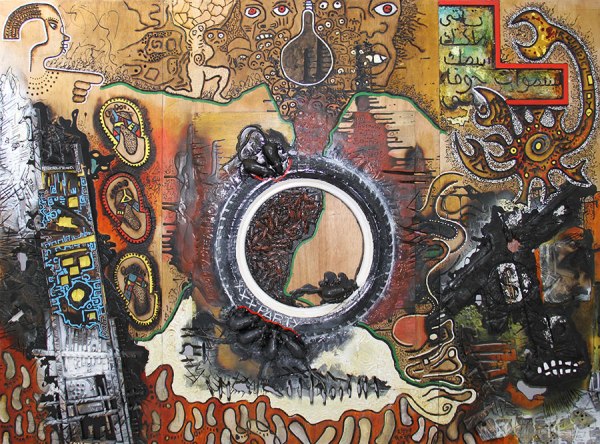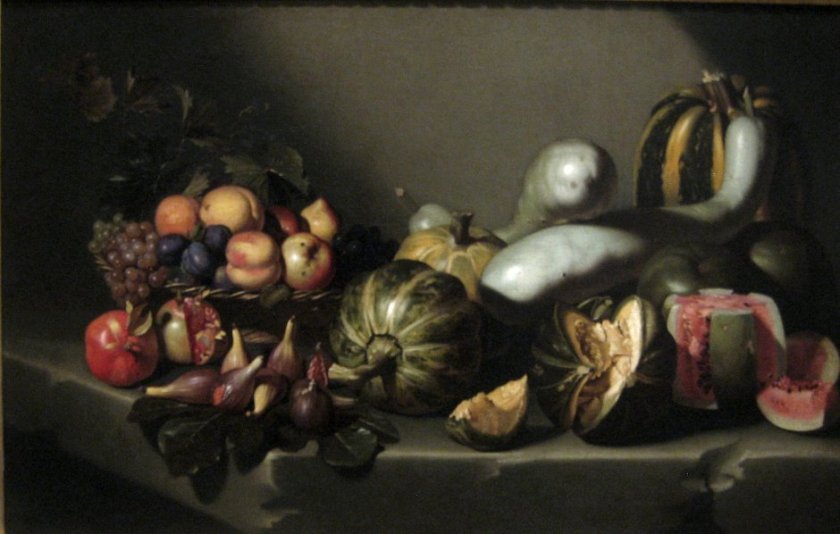It is strange, given I work in London and am on an Art Degree, that this was my first visit to the National Gallery. In visiting the Gallery I needed to focus, at least to a degree, and so I chose to consider primarily Landscape images. That didn’t restrict me too much, as there are large numbers of them in there, but it at least allowed me to have a meaningful approach.
Continue reading “Visit to the National Gallery”Tag: artists
Visit to the Tate Modern
This started a productive week and weekend of art visits. I happen to be working very near the Tate Modern at the moment, and so decided to “pop in” over a couple of lunch time sessions. Even in such short sessions I managed to see a lot of new material, and found Galleries I hadn’t been in before. The following image summary gives an idea of the range:
Continue reading “Visit to the Tate Modern”Art being viewed…
Legacies of Biafra
Back in February I visited this exhibition, and for various reasons I keep coming back to think about it. Unfortunately you couldn’t take photographs and there is little about the exhibition available on the Internet. The works were highly varied, within the theme of the Nigerian civil war. This is a subject that I have little personal connection with, but it has made me think about artists’ responses to such events and the fallout from them.
Continue reading “Art being viewed…”Research: Cabbages and art
I started setting up to do a still life with a cabbage as part of the assignment work. This is based on a pointed cabbage we picked up. (Now eaten, but I’ve still got photographs.)

As an investigation around this, however, I decided to have a look around at how different artists had treated still life images including a cabbage. It turns out it is a fairly rich field, as a quick Google search and following on from it revealed.
Research Point: Still life genre
Researching still life as a genre is a very wide brief, and so I started with a very wide net. I search for the term on wikiart, at the Tate Modern and V&A. The breadth of the collection of resultant images can be considered by comparing the featured image by CARAVAGGIO with one by Mondarian. Continue reading “Research Point: Still life genre”
Modern Art Themes…
I’ve been at the Coursera again. This time “Art & Ideas: Teaching with Themes” (https://www.coursera.org/learn/ideas). The idea is to consider Modern and Contemporary art within the context of its meaning rather than by time and art movement. The themes are: “Places & Spaces”, “Art & Identity”, “Transforming Everyday objects” and “Art & Society”. The main interest lies in their coverage of the context around a number of pieces and the way that they mesh with the theme. Continue reading “Modern Art Themes…”
Kaffe Fassett’s colour at Mottisfont
British Museum: Hokusai
THE ARBOREALISTS – 5 May 2017
Source: THE ARBOREALISTS – 5 May 2017
Artists that specialise in tree related drawings and paintings. Now that sounds like something I should have a close look at – when I can find the time.
Analysis: Sheep landscape by Michelle Shuff
http://michelleshuff.com/sheep-landscape/
Consideration based on “Making Sense of Art History“. I’ve selected this approach as a basis to see if it helps me consider the work in a deeper sense. Continue reading “Analysis: Sheep landscape by Michelle Shuff”
In the Studio: Jackson Pollock
Well, I guess I had to get back here sooner or later. Interestingly, however, I think this approach to finding his work at least helps me understand it to a degree. I think I am also starting to understand why I don’t “get it.” My tutor described Pollock as “a painter’s painter”, and I have never really had a serious attempt at painting. This (to my mind) limits my ability to appreciate a body of work that is essentially about the action of making a painting in different ways. Continue reading “In the Studio: Jackson Pollock”
In the Studio: Willem de Kooning
Continuing on the “In the Studio” series, the focus has moved to de Kooning.
Approach
The initial video is about de Kooning’s style and approach. Here the artist is an “Action Painter” with major gestural marks on a large format and working with the “physicality of the medium”. This is explained in the videos as using the liquid and viscous properties of different paints and paint blends to get effects. Continue reading “In the Studio: Willem de Kooning”
Developing Artistic Style, part 2
What are the things I like?
I’ll start with some of my own sculpture that I actually like. I’m sticking to pieces that are my design, rather than copies of someone else’s work. When on courses at the Austria wood carving school one of the major teaching devices is to get you to carve from others designs. Although I like many of these, I don’t really consider them my work. Continue reading “Developing Artistic Style, part 2”
Developing Artistic Style
This particular journey started whilst touring Pinterest. It is something I have come to realise that I need to do previously, but in a fairly abstract way rather than considering a research-based approach. This is a theme that keep recurring, as in “Newman made Pagan Void two years before he discovered his artistic direction. Like many of his peers, he was interested in Native American art and Surrealism, influences visible in the biomorphic shapes in this abstraction.” (From
https://www.coursera.org/learn/painting/supplement/KojL2/2-1-introduction-to-barnett-newman, part of the “In the Studio: Postwar Abstract Painting!” course about Barnett Newman. You may have to sign up to view the material, URL Viewed 05 April 2017) This sort of reference occurs many times, and I have observed it in a number of artists. The concept seems to be that an artist tries lots of different approaches and techniques until the find something that they focus on and really get involved with. Continue reading “Developing Artistic Style”
In the Studio: Postwar Abstract Painting!
Back in April this course was suggested on one of the OCA groups: https://www.coursera.org/learn/painting, and so I signed up for it. The idea of the course is a set of videos and material about the New York School of art, which includes approaches of seven New York School artists, including Willem de Kooning, Yayoi Kusama, Agnes Martin, Barnett Newman, Jackson Pollock, Ad Reinhardt, and Mark Rothko. I thought of this as an opportunity to learn to appreciate these artists more clearly. In some ways it is working. Continue reading “In the Studio: Postwar Abstract Painting!”
DANIEL CRAWSHAW, Moonshine, 2014
I was looking through the Jerwood Drawing Prize 2015 catalogue, sent to me by my new tutor. This piece caught my eye on page 21 of the catalogue. Continue reading “DANIEL CRAWSHAW, Moonshine, 2014”
Reflection on Tutor feedback
On consideration I’ve decided that it is appropriate to reflect on my tutor’s feedback again. This is more for my own thinking than as a response. After my Assignment 2 feedback I realised that I hadn’t understood and/or followed some of his advice. Considering each point explicitly at this point seems worthwhile as a completeness check, and to build a “further work” list. Continue reading “Reflection on Tutor feedback”
Project 3.2 Brief
Brief
The key points from the Project 3.2 brief are: Continue reading “Project 3.2 Brief”
Depth post linear perspective
The course materials also indicate that we should consider more modern approaches to the representation of depth. In many ways this concept seems to be driven initially through Cezanne and Cubism. Cezanne used colour to represent depth, rather than using a structured and basically mathematical process. In essence, as objects tend into the background they will tend to look more blue. There are other indicators, such as them being smaller and having less detail. This is shown in Mont Sainte-Victoire: Continue reading “Depth post linear perspective”














